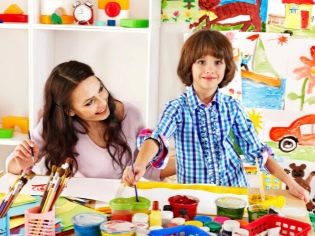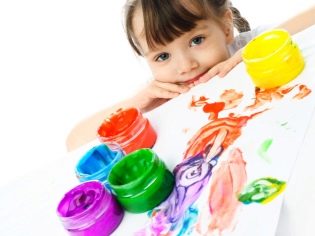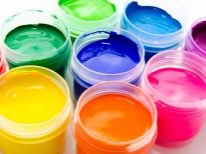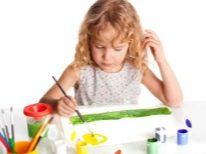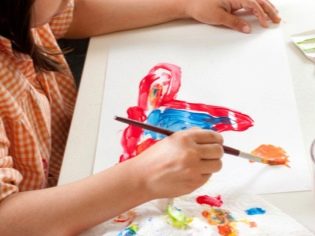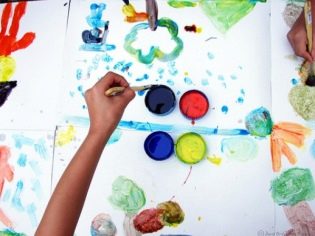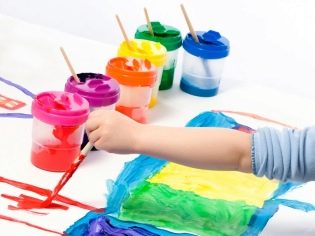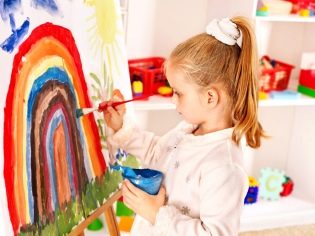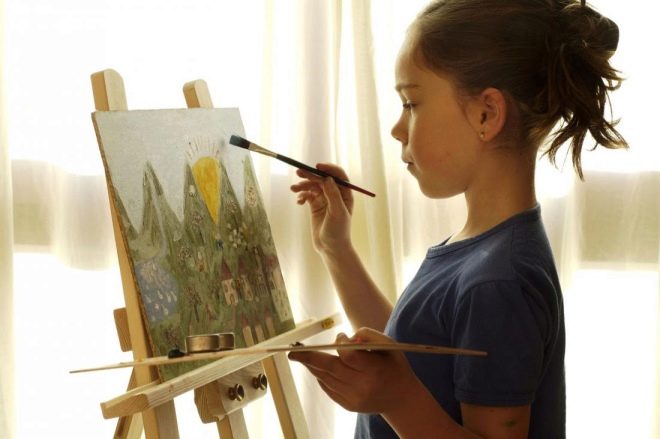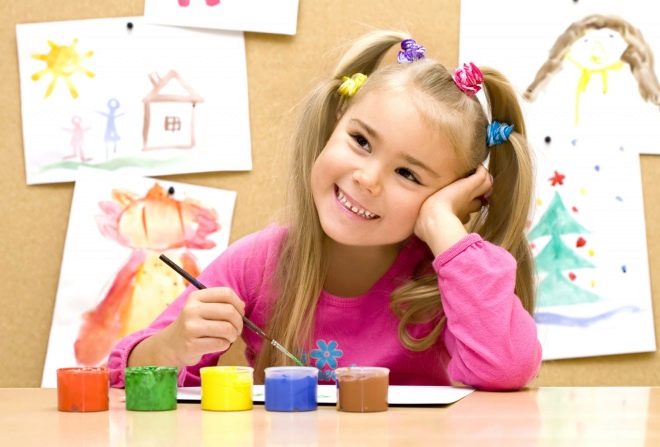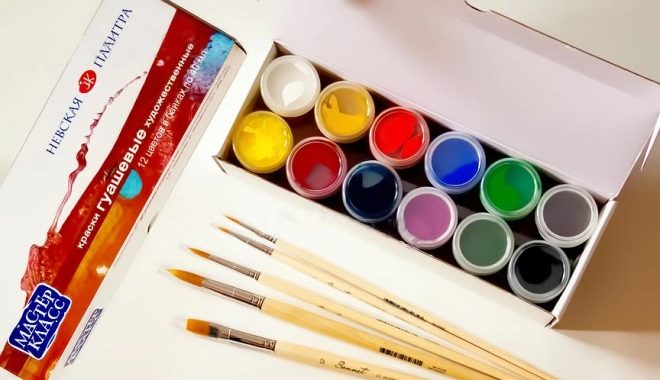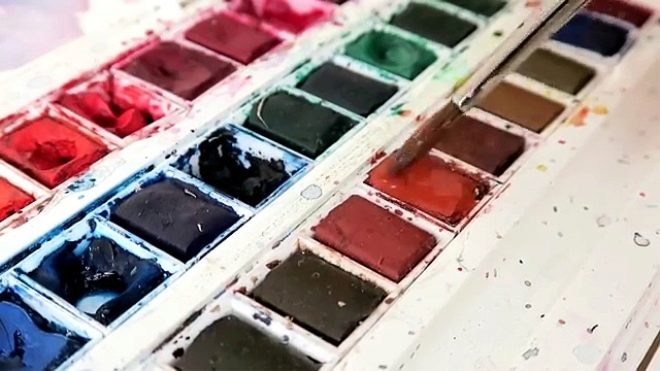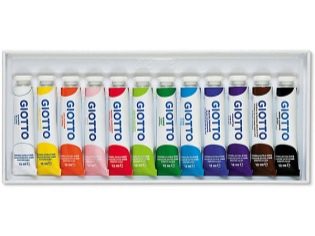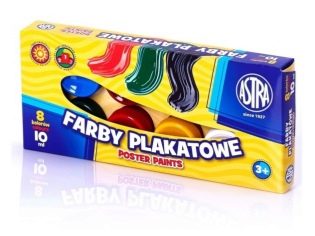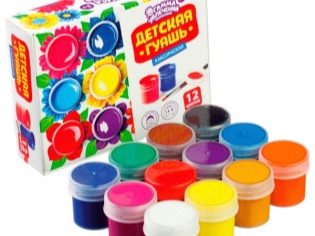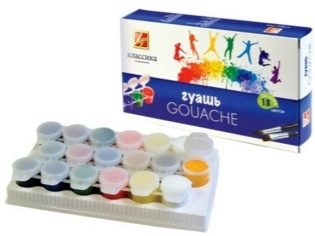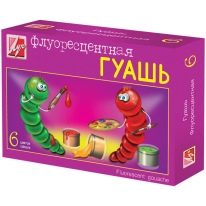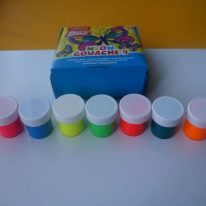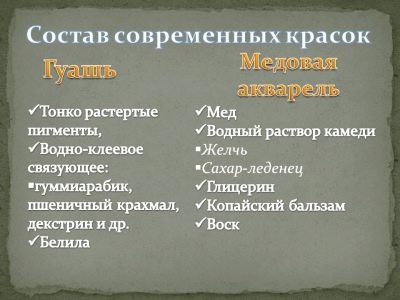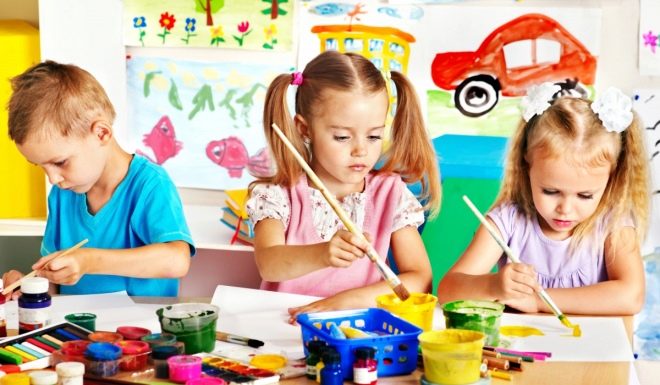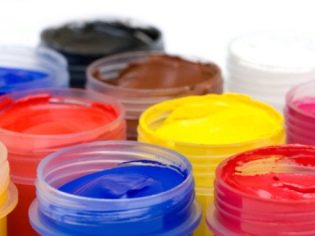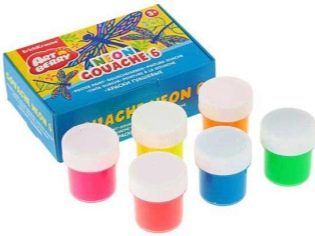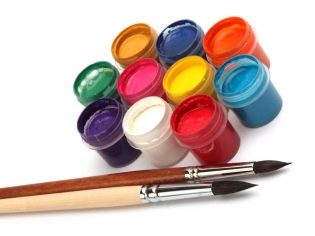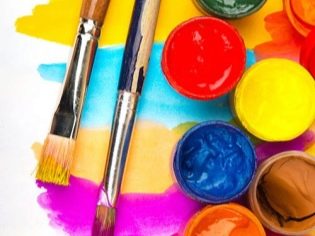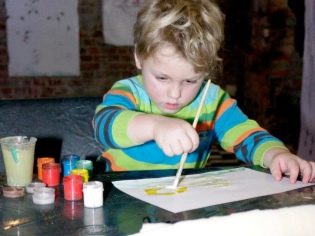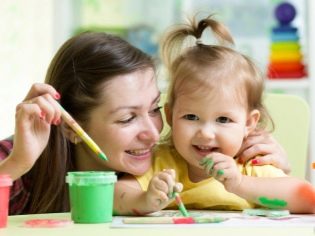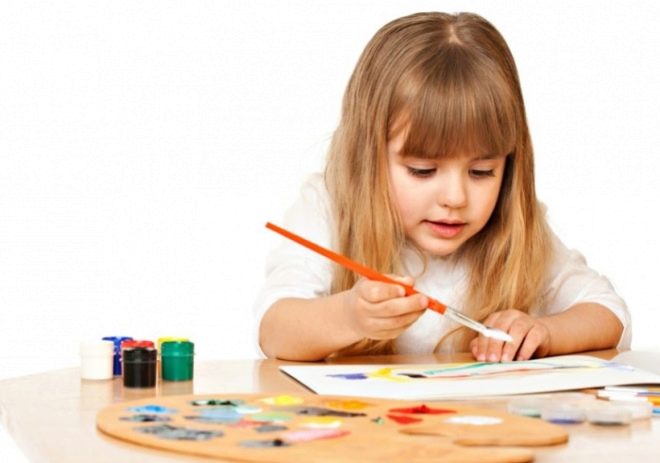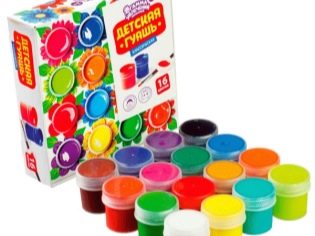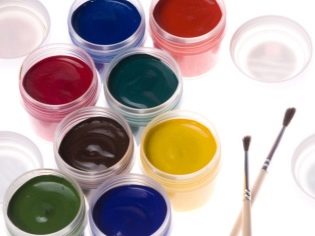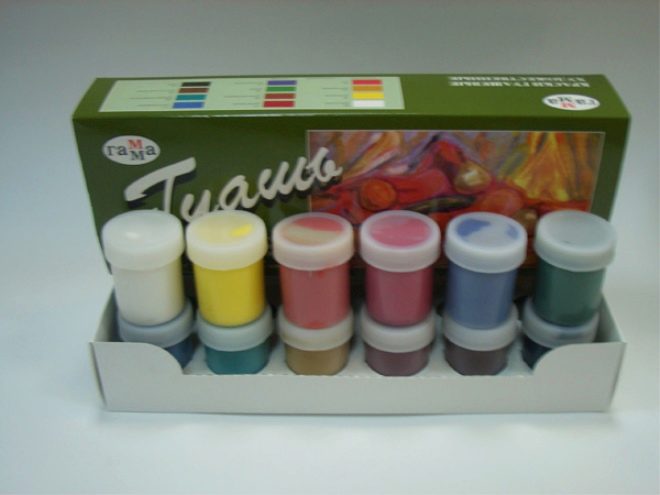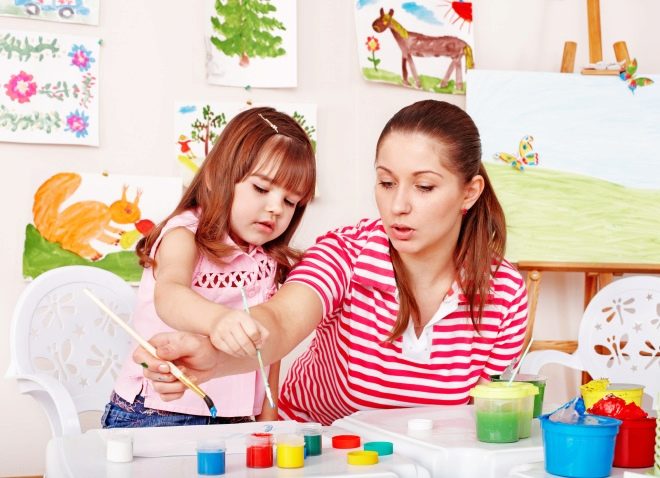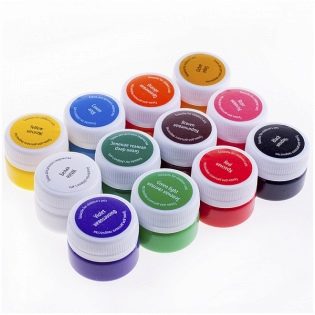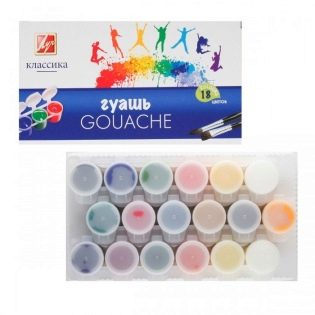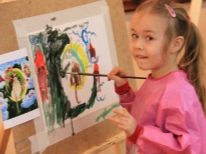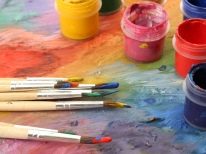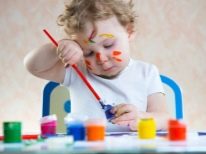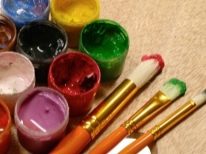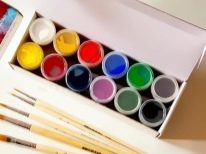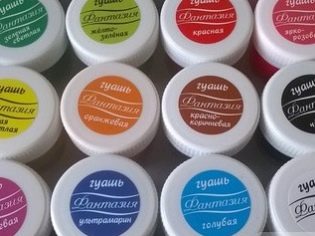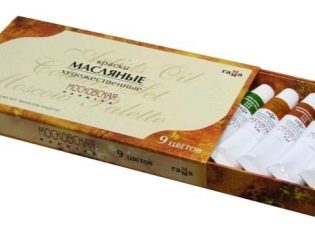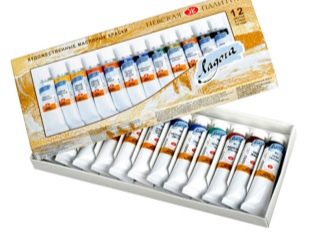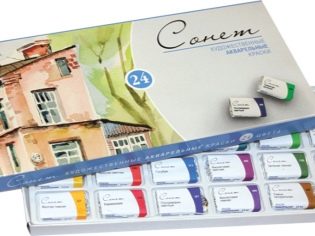Gouache: features of choice and advantages
Drawing for a kid is an interesting fun and a great way to develop a whole range of skills and abilities, including fine hand motor skills, imagination and imagination, memorization of colors and the general development of mental activity. Modern industry pays great attention to the needs of the development of children, because it offers more than a dozen varieties of tools for drawing, many of which are quite suitable for small artists.
That gouache is one of the most popular in the world of liquid paints. Professionals usually call her overly childish, but this fact does not frighten parents, but attracts.
What it is?
Gouache and watercolor are often perceived as something related. It cannot be said that such a statement is unfair - they are in many ways similar. The difference lies in the fact that gouache is much thicker: in addition to pigments and glue, its composition includes whitewash (this is a bit like pastel), which affects the final shade of the dried-up pattern.
In the recipe, there is no bull bile, which is characteristic of a good watercolor, in order that the paint dissolved in water does not roll into drops. In all other respects, these two dyes are similar. It is really difficult to draw large and serious paintings with drawing small details with gouache precisely because of the unpredictability of the final color and the rolling of pigments. However, this does not prevent it from being actively used in poster graphics and children's art.
Created gouache initially not for children. To call this kind of a mixture in gouache began in France in the 18th century. However, historians have found that in fact this recipe is older by several centuries. The old books of the Middle Ages often illustrated with gouache, then it was often diluted with watercolor (approximately in half). In the Renaissance, gouache became the property of professional artists, however, they left it with rather auxiliary value (they sketched or painted small portraits to order).
If we talk about the art criticism value of gouache, then the beginning of the last century can be considered the peak of its use by professionals. At this time, the widespread use of gouache was typical for Russian graphics (gouache technique refers specifically to graphics, not painting). Famous Russian artists who turned to gouaches in their works were, for example, Alexander Benois, Isaac Levitan, Valentin Serov, Nikolai Roerich.
In recent decades, gouache is experiencing a second bloom - the demand for it is truly huge. The main consumers are children, for whom it is one of the main methods of creative development, but this does not detract from its value to society.
Advantages and disadvantages
Like any other product for creativity, which is lucky to have competitors, gouache has certain advantages and disadvantages. Adult professional artists would give their own vision of the advantages and disadvantages of this type of paint, however. In our case, it is better to build on its characteristics in relation to the child. For the creative development of the baby gouache should be chosen because it is characterized by the following positive qualities.
Easy error correction
When you only learn to draw, it is especially important not to encounter unrecoverable errors, since they can discourage the desire to try further. Gouache is good because its new layer is able to completely block the old one. The blot is just being painted, and it will no longer be visible.
It is noted that it is not necessary to get too involved in such redrawing: a large number of layers leads to the formation of cracks on the surface of the picture, however, the possibility of correction should encourage the novice.
Low cost
The average set of colored gouache will cost the parents a few dozen rubles, and such a gift will suffice for a fairly large number of drawings. This allows you to learn to draw children from families with any income level. Today in the shops you can buy a separate white: it is convenient, since it is white paint that is the chassis itself.
Fast drying
Children usually learn to draw not in a full-fledged studio, but in lessons held in special classes, which they leave immediately after the end of the lesson. This means that the little artist does not have time to wait until the drawing is dry (you can’t put a wet album in the briefcase).
Gouache is one of the shortest drying times among all paints, which allows it to be used for the needs of school education.
Good water solubility
Often, gouache is sold in a liquid state in special jars, which allows not to waste time and effort on its cultivation, but to use it immediately. Over time, the liquid can evaporate, then the gouache will dry, but the dried mass can be returned to its original state simply by diluting it with water.
Minuses
Unfortunately, there are also some drawbacks to this paint. They lead to the fact that professional artists do not consider gouache worthy of serious works. And for children, some of its qualities may be a reason to prefer other paints. Here's what consumers usually stop:
Blanching shades
Since the mixture contains whitewash, when the paint dries, it slightly changes and becomes paler. For professional artists, it's almost a disaster, because it is almost impossible to calculate the scale of changes in advance. The child may also be disappointed, learn to draw because of this a little more difficult.
Pattern instability
Even on the dried picture you should not hold your finger - there is a risk of getting it dirty, and even smear the drawing. This is a certain risk to the purity of the portfolio and its entire contents.
Gouache is washed off with water, so under certain conditions the scale of pollution can be shocking.
Probability of allergies
As a rule, gouache is completely safe for the vast majority of children. Some may have allergies after using it.
In order to avoid such situations, you should carefully read the composition of the mixture before purchasing.
Kinds
Gouache should not be taken as one particular product: the variety of its varieties is quite wide. It is divided into four main types of composition and purpose.
Professional
Professional art gouache is maximally focused on the creation of large, serious paintings, which in our time can be found not so often. It is characterized by a characteristic matte velvety, as well as high covering power, allowing to paint over anything. Used for drawing on paper and cardboard. Such a set of colors in 36 colors is a classic that would have been appreciated by outstanding artists of a century ago.
Poster
Special poster gouache incorporates kaolin instead of white. This makes her drawings more vivid and less prone to fading. Its name this variety is obliged to the most frequent use. She draws large posters and signs where picturesque brightness is important. A set of 24 colors for such needs is considered quite sufficient.
Children's
Special gouache is available for children. Unlike professional, where gum arabic is used as a binder, inexpensive PVA is added to the nursery, which somewhat reduces the plasticity of the mass, but gives a number of bonuses (quick drying, increased resistance to wiping, the ability to paint on paper, plywood or canvas).
For the youngest children who are just starting their journey in drawing, parents often buy sets of 6-9 colors. For schoolchildren and those who are interested in gouache, sets of 16-18 colors are relevant.
Acrylic
Such gouache is still quite a rare phenomenon, but it has specific properties that make some drawing lovers make a choice in its favor. With all the typical gouache virtues, due to the addition of acrylic to the composition, it sets itself much better with surfaces of any type and is also more resistant to mechanical damage.
For children's creativity, gouache paints produced in jars in liquid form are more familiar. There is also a dry gouache, which is diluted with water to a consistency selected at its discretion. In addition to the classic gouache, there is also fluorescent or neon (glowing in the dark) paint, which is especially popular in poster graphics.
Composition
The chemical composition of typical gouache is quite simple. It includes a pigment of the required color, a binder, and also white (mainly titanium). Most types of the diluted mixture also contain water - it will be better for the paint if the liquid is distilled. The type of binder used usually determines the type of gouache. In the professional art variety, expensive gum arabic is used; for children's creativity, this basis is replaced by ordinary PVA.
Less common is honey or oil base. The effect of the use of such paints is reminiscent of an oil painting or drawings made in honey watercolor. Acrylic gouache is even more unusual, in which acrylic is the basis for the dye and its future protection from any negative external influence.
The use of paints of this type allows you to achieve a result that resembles painting with acrylic paints (the picture does not get dirty at all, and it does not need to be further protected so that it will last for many years).
In addition to the obvious components, other components that make this type of paint unusual can be part of the gouache. The most prominent are fluorescent dyes, which add special pigments that can glow in the dark. The standard composition of gouache is usually presented in ordinary multi-color sets of relatively low weight. Some types of paint come in big cans.
They hold 500 ml or even 1 liter of the mixture. The very fact of packing in a large container already indicates that this product has some kind of highly specialized value, refers to professional drawing tools or has an unusual composition.
For children to buy such paints are not recommended, even if the kids show a remarkable interest in drawing.
Color palette
The available selection of shades of modern gouache is quite large and has dozens of shades, including fluorescent varieties and variants with sparkles. Given the specific color of the gouache (rapid blanching of shades during drying), the artistic variety usually contains the names of the colors, verified with GOST, so that the artist could reasonably expect a particular shade in the final result. All other sets of such tips usually do not contain, so you should understand: the bright, just completed picture will not be saturated any more after drying.
Because of their high opacity, gouache painting begins with darker tones. After that, they switch to the light: the black or the dark part of the picture appears initially, and the white and light will crown the creation of the masterpiece.The artist has the opportunity to arrange light highlights on the almost finished picture. Different colors of gouache mix well together.
In order to avoid dirt, only those shades that are located in the color wheel next to each other should be mixed with each other.
According to this logic, red and pink paint, gold and yellow, pearl and blue, emerald and green mix well. As for the shadows, then according to the rules of gouache graphics, they are not black. They are chosen for the shade that lies in the opposite part of the color wheel. Green is used as a shade for red, ocher requires a blue shade, silver dye needs shading black, and brown is a shade yellow. In this case, all shades are taken in a richer version than those that seem necessary for the picture - this allows you to level the lightening during drying.
One of the main advantages of gouache is the ability to make changes to the finished drawing. Due to the fact that this paint is easily washed away with water, the changes need to be made carefully and only after the previous layer has dried. Professionals usually try to completely remove the wrongly drawn layer, for which they shade with a wet brush until the main part of the pigment is removed.
You can stop at shading: thanks to this, you can achieve a more subtle play of light and get rid of too sharp contours.
How to choose?
At first glance it may seem that all gouaches are the same and differ only in price and number of colors. In fact, when choosing a paint should pay attention to many factors. The best gouache for school is the one that has the label “childish”. For kids, this is exactly what you need.
In the context of the security of the contents of the portfolio, the type of paint packaging is of great importance. A cardboard box is quite acceptable, because gouache is usually sold in sets of plastic jars, each of which is securely closed. Another thing, if for some reason it is presented in another form (for example, in the dry). In this case, you should choose a reliable container that will not let the mixture out.
Typical gouache is designed to be painted over paper and cardboard without any special coatings. Children's creativity can go beyond these limitations: sometimes paints are needed to paint on glass or wood. If it is assumed that the child will draw not only in the album, but also far beyond, It is worth asking in advance about choosing a special gouache.
Those who want to buy just gouache should pay attention to the acrylic variety - it securely seizes with almost any surfaces without prior preparation.
The choice of the number of colors should be determined by the actual needs of the baby at this stage. For beginners karapuzov, who so far work in the best traditions of abstraction, the purchase of a set of 6 colors will be sufficient. For schoolchildren, such a gift would limit the flight of creative thought, because even for relatively serious drawing classes, sets of 10-12 colors are needed. Those who visit the children's art studio may need sets with a lot of colors.
Reviews and manufacturers
That gouache is the most popular children's paints because specially produced kits for kids are well attached to ordinary paper and not smeared. This criterion is usually more approved by parents - they praise the gouache for the purity of notebooks and other insides of the student bag. The packaging of such paints is usually called extremely convenient, since in children's sets they do not require any additional procedures for the beginning of creativity, they are reliably sealed in plastic jars from which they cannot spill out.
Gouache is the best choice for children who are just beginning to learn the world of art created by their own hands.- note in the comments parents who bought these paints.
These advantages are good only for beginners, any serious passion for painting often involves a transition to other types of paints - sure those who draw long enough. Of course, in this case everything depends on the teacher, however, in the world of gouache professionals, so far more criticized.
For serious paint-drawing classes, you need to select carefully, because there is always the risk of becoming disillusioned with a variety of dye just because an unlucky copy is caught.
Gouache produced by major Russian manufacturers. She practically has no complaints about who exactly released. Yaroslavsky "Ray"Moscow "Gamma", St. Petersburg "Spectrum" - all these brands, well-known to a wide range of consumers of products for children's creativity, produce gouache, which can hardly be called professional, but not ashamed to be used for effective teaching of children.
If you need something higher level, you should pay attention to the products of the famous St. Petersburg company "Neva Palette"which has a gouache ruler (and other paints) called "Sonnet", guaranteeing a very attractive result at a relatively low cost.
You can find out which gouache to choose from the video below.



